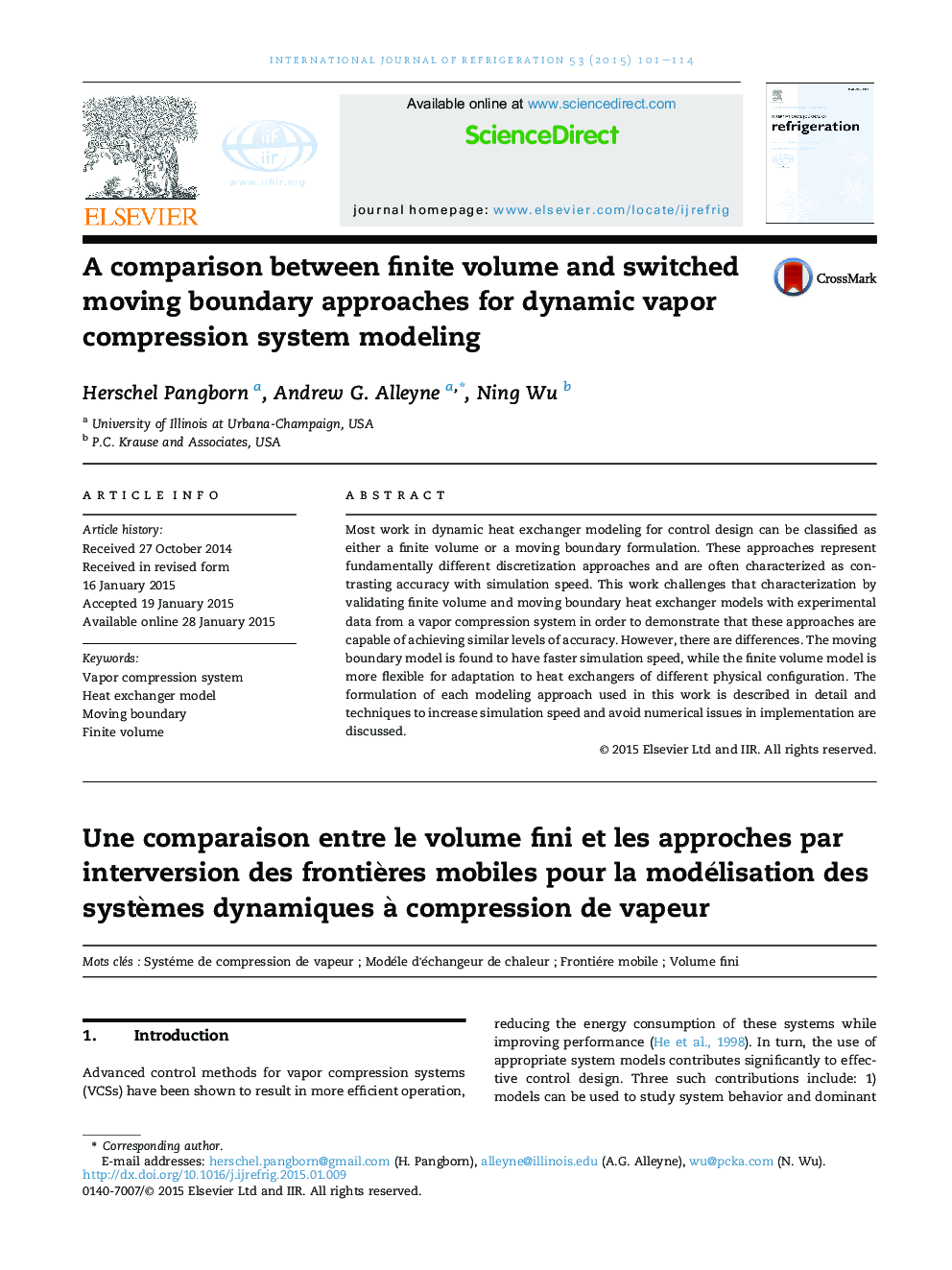| کد مقاله | کد نشریه | سال انتشار | مقاله انگلیسی | نسخه تمام متن |
|---|---|---|---|---|
| 789321 | 1466412 | 2015 | 14 صفحه PDF | دانلود رایگان |
• Compares approaches for dynamic VCS modeling.
• Demonstrates that the tradeoff in MB vs. FV approaches is not speed vs. accuracy.
• Demonstrates that the true tradeoff is speed vs. flexibility.
• Conclusions are supported by simulation results and experimental data.
Most work in dynamic heat exchanger modeling for control design can be classified as either a finite volume or a moving boundary formulation. These approaches represent fundamentally different discretization approaches and are often characterized as contrasting accuracy with simulation speed. This work challenges that characterization by validating finite volume and moving boundary heat exchanger models with experimental data from a vapor compression system in order to demonstrate that these approaches are capable of achieving similar levels of accuracy. However, there are differences. The moving boundary model is found to have faster simulation speed, while the finite volume model is more flexible for adaptation to heat exchangers of different physical configuration. The formulation of each modeling approach used in this work is described in detail and techniques to increase simulation speed and avoid numerical issues in implementation are discussed.
Journal: International Journal of Refrigeration - Volume 53, May 2015, Pages 101–114
